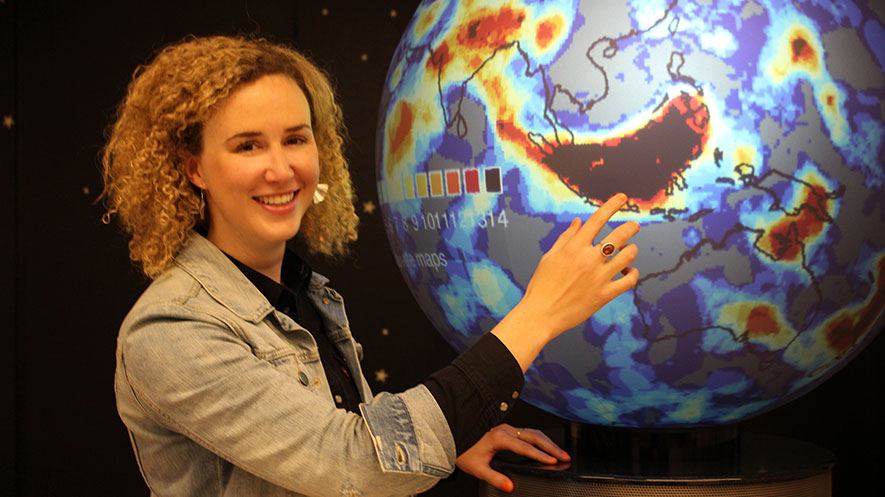We think of oceans as being stable and permanent. However, they move at about the same speed as your fingernails grow. Geoscientists at CEED have found a novel way of mapping the Earth’s ancient oceans.
Video represents a fly-through rendition of a seismic tomography of Earth:
The surface of the Earth is in constant motion. New crust is formed at mid-oceanic ridges, such as the Mid-Atlantic Ridge, and older crust is destroyed.
If we go millions of years back in time, the oceans and the continents of planet Earth were very different. Oceans that once existed are now buried deep inside the interior of the Earth, in the mantle.
Seismic tomography uses earthquakes to image Earth’s interior down to approximately 2,800 km. Models based on this technique are used to show how the surface of our planet may have looked like up to 200 million years ago.
Grace Shephard at the Centre for Earth Evolution and Dynamics (CEED), University of Oslo has found a simple, yet powerful way to combine images from alternative seismic tomography models. In a new study published at nature.com, Shephard and colleagues Mathew Domeier (CEED), Kara Matthews, and Kasra Hosseini (both University of Oxford) reveal a new way of displaying models of the evolution of the Earth’s interior.
– There are many different ways of creating such models, and lots of different data input can be used, explains Grace Shephard, who has been a postdoctoral researcher at CEED since she took her Ph.D. at the University of Sydney four years ago.
– We wanted a quick and simple way to see which features are common across all of the models. By comparing up to 14 different models, for instance, we can visualize where they agree and thus identify what we call the most robust anomalies.
This gives more accurate and more easily available information about the movements of ocean basins and contents back in time – and the interaction between the Earth’s crust and the mantle.
Reconstructing continents and oceans
The tomography models are used to reconstruct movements of continents and oceans. The novel and open way of displaying the models takes away some of the decision making for scientists studying the dynamics of the Earth.
– With this tool, geoscientists can choose which models to use, how deep into the mantle to go, and a few other parameters, explains Shephard. – Thus, they can zoom into their area of interest. However, we must remember that the maps are only as good as the tomography models they are built upon.
Grace Shephard and colleagues have also studied if there are more agreement between the various tomography models at certain depths of the mantle. They have made discoveries that suggest more paleoseafloor can be found at around 1,000 – 1,400 km beneath the surface than at other depths.
An inner “traffic jam”?
– If these depths are translated to time – and we presuppose that the seafloor sinks into the mantle at a rate of 1 centimeter per year – it could mean that there was a period around 100–140 million years ago that experienced more ocean destruction. However, it could also identify a controversial region in the Earth that is more viscous, or ‘sticky,’ and causes sinking features to pile up, a bit like a traffic jam. These findings, and the reasons behind, bear critical information about the surface and interior evolution of our planet, explains Shephard.
Sidebar:
Simple and powerful
SEISMIC TOMOGRAPHY
Using information from earthquake data, images of the Earth’s interior via computer models can be generated – this technique is called seismic tomography.
Similar to medical X-ray and CT scans that look for features within the human body, these models image the internal structure of the Earth.
There are different types of data and ways of processing them, which has led to alternative seismic tomography models.
Thus, a given seismic tomography model is just one snapshot into the present-day structure, which has been shaped by hundreds of millions to billions of years of Earth’s history.
Reference:
Shephard, G.E., K.J. Matthews, K. Hosseini, M. Domeier. 2017. On the consistency of seismically imaged lower mantle slabs. Scientific Reports. v7. doi:10.1038/s41598-017-11039-w
By: Dag Inge Danielsen



